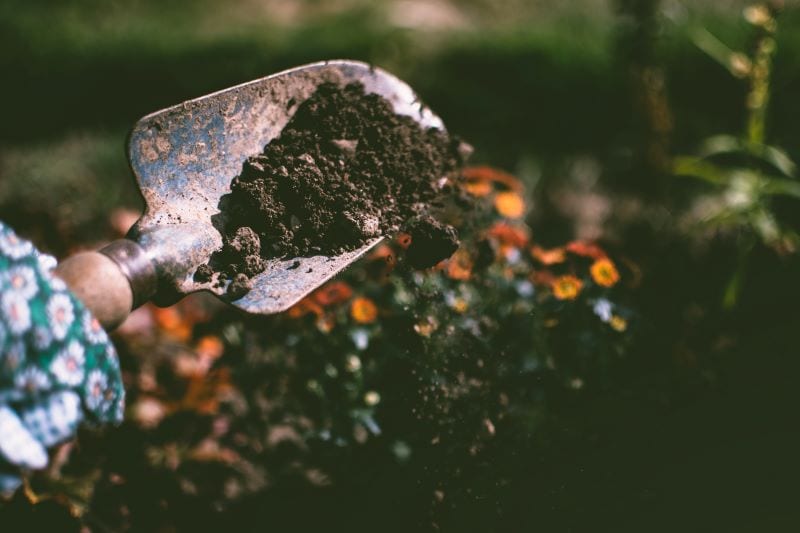Georgia pecan trees can provide delicious nuts, ample shade, and a calming atmosphere when they are able to grow in a healthy environment. But unfortunately, not all conditions will affect a Georgia pecan tree in the same way.
There are plenty of conditions that are pretty apparent in how they affect the growth of your pecan tree — temperature, moisture, sunlight, and so on. However, one factor that is often overlooked is the soil in which it grows.
Those of us without ample gardening experience might look at soil as nothing more than, well, dirt. This soil is actually one of the main factors that will decide if your tree will grow up healthy or become stunted.
The roots of your tree live deep within this soil. The amount of nutrients within this soil equate to the nutrients that are available to your tree.
So how do you care for this soil? How do you know if your Georgia pecan tree is getting all the nutrients it needs to grow up strong and tall?
Fertilization. But what is fertilization, and how does it help?
We’ll discuss the essential considerations of fertilizing your Georgia pecan trees:
- Why Fertilize?
- How to Determine the Right Type of Fertilizer
- How Much Fertilizer Should I Use?
- When to Apply Fertilizer for Georgia Pecan Trees
- Best Practices to Assist Fertilization
Why Fertilize?
Most soil doesn’t have the proper components to produce a healthy plant. And a Georgia pecan tree is going to need a lot of nutrients in order to grow in the way you would like. Fertilizing is a means of replenishing these important nutrients to the soil, which in turn will be delivered to your tree.
These nutrients are as important to the tree as water and sunlight. Think of fertilizer as plant food. Everybody needs to eat, right? This applies to trees as well.
A failure to properly fertilize Georgia pecan trees will lead to poor growth and low nut production.
How to Determine the Right Type of Fertilizer
Fertilizer is generally made up of three components:
- Nitrogen (N)
- Phosphorous (P)
- Potassium (K)
These three components work together in varying percentages to address your particular soil composition. The best way to know exactly which type of fertilizer you need will require a soil test.
However, Georgia pecan trees will generally benefit from using what’s known as 10-10-10 fertilizer. The three numbers refer to the above components (in order). The numbers themselves are percentages, meaning the mixture is 10% nitrogen, 10% phosphorus, and 10% potassium.
The remaining 70% will depend on your particular mix, but it could include a variety of other components such as potassium hydroxide, phosphoric acid, and more.
10-10-10 fertilizer is considered a complete, all-purpose fertilizer.
Visit Georgia Pecan Nursery to learn more about bareroot pecan trees!
How Much Fertilizer Should I Use?
The amount of fertilizer will again be dictated by your particular case. A soil test will give you a more definite amount of fertilizer to add to your soil. However, there are general rules that can be followed if you don’t want to dig deep into the scientific approaches.
Simply measure the diameter of your tree at about chest height. Wrap a tape measure around the tree to get the diameter in inches. Then, take that number and multiply it by four. This will give you the amount of 10-10-10 fertilizer to add in pounds.
To put it another way, every inch of the diameter of your tree will need four pounds of fertilizer.
So, if your tree is 20 inches in diameter, you should use 80 pounds of fertilizer.
When to Apply Fertilizer for Georgia Pecan Trees
Most situations will only require fertilizing your Georgia pecan trees once every year. This should be done late in the dormant season for your trees, which will be around February and March. You want to get the fertilizer on the ground before the spring thaw fully kicks in.
Best Practices to Assist Fertilization
Apply the fertilizer in an even layer. This ensures that the entire root system benefits from the nutrients in the fertilizer. Speaking of the root system, you want to try to get the fertilizer over as much of it as possible. An easy way to estimate this is to spread the fertilizer about as wide around the trunk as the canopy.
Give the fertilizer a good soak to ensure it settles into the soil. Creating a series of small holes in the ground prior to spreading the fertilizer gives it an even better chance of integrating with the soil and providing necessary nutrients to the surrounding soil and tree roots.
Sourcing Quality Georgia Pecan Trees
Georgia Pecan Nursery offers your choice of over 14 different varieties of pecan trees, sold healthy and ready to ship. Put our decades of experience to work for you and start your pecan journey with our bareroot pecan trees.

